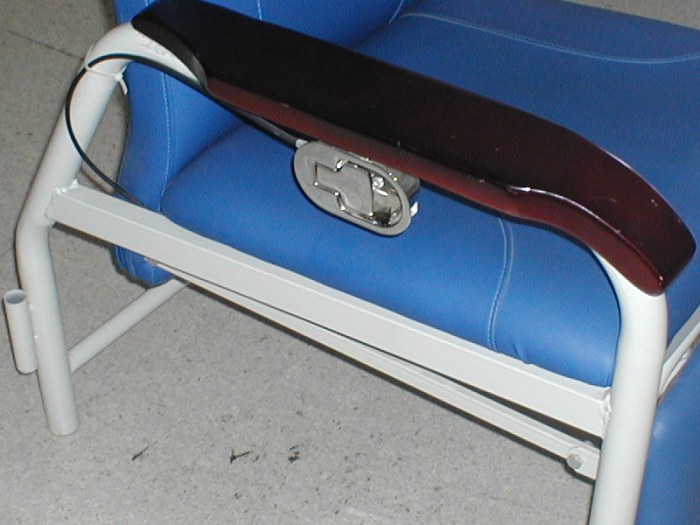Is a geri chair a restraint? Dive into this intriguing discussion exploring the ethical and practical considerations surrounding the use of geri chairs, delving into their purpose, design, and implications in healthcare.
Geri chairs, designed to enhance safety and comfort for elderly or disabled individuals, raise questions about their potential as restraints. This article unravels the complexities of this topic, examining the legal and ethical boundaries, clinical applications, and alternatives to geri chairs.
Definition of a Geri Chair: Is A Geri Chair A Restraint
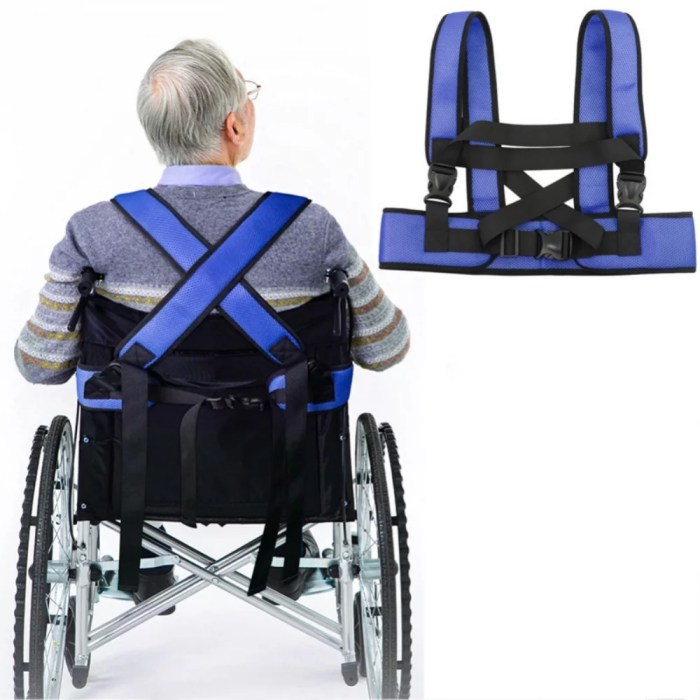
A geri chair, also known as a geriatric chair, is a specially designed chair intended to provide comfort, support, and safety for elderly individuals or those with mobility impairments.
Geri chairs are typically designed with a higher seat height, wider seat, and armrests to make it easier for users to sit down, stand up, and transfer in and out of the chair. They often incorporate features such as adjustable seat height, reclining backrests, and swivel seats for added comfort and convenience.
Intended Population
Geri chairs are primarily intended for elderly individuals who may experience difficulty with mobility, balance, or coordination. They are also suitable for individuals with physical disabilities, cognitive impairments, or other conditions that affect their ability to sit or stand independently.
Legal and Ethical Considerations
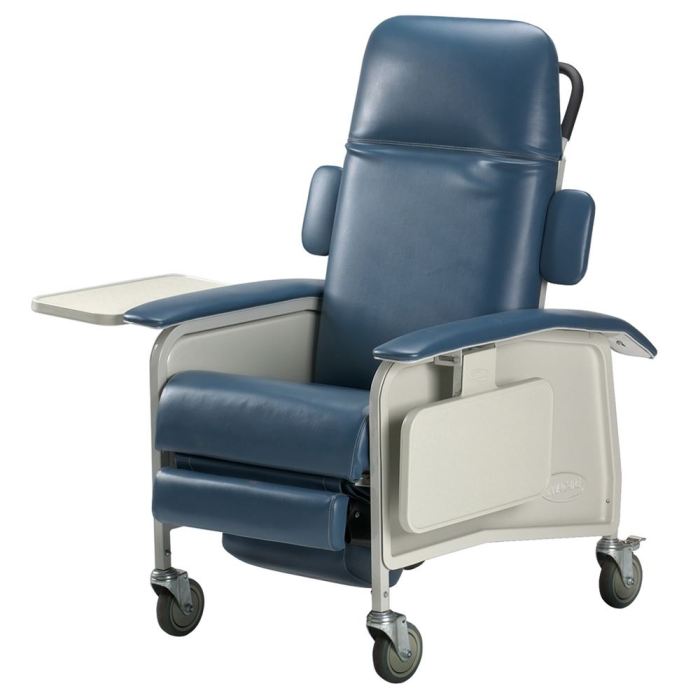
Geri chairs are designed to provide support and comfort to elderly or disabled individuals. However, in certain situations, they may also be used as restraints.
Legally, a restraint is defined as any device or technique that restricts a person’s freedom of movement. This includes physical restraints, such as handcuffs or leg restraints, as well as chemical restraints, such as sedatives.
The use of restraints in long-term care settings is strictly regulated by both federal and state laws. In general, restraints may only be used when necessary to prevent harm to the individual or others. They must be used in a way that is least restrictive to the individual’s freedom of movement and must be removed as soon as possible.
Ethical Implications
The use of geri chairs as restraints raises a number of ethical concerns. One concern is that geri chairs may be used to restrict an individual’s freedom of movement without their consent. This can be particularly problematic in cases where the individual is unable to communicate their wishes.
Another concern is that geri chairs may be used to punish or control an individual. For example, a geri chair may be used to prevent an individual from leaving a room or participating in activities.
Finally, geri chairs may be used in a way that is harmful to the individual. For example, a geri chair may be used to restrain an individual in a position that is uncomfortable or painful.
Examples
There are a number of situations where geri chairs may or may not be considered restraints. For example, a geri chair may be used to provide support to an individual who is unable to sit up on their own. In this case, the geri chair is not being used as a restraint.
However, a geri chair may also be used to restrain an individual who is trying to leave a room or participate in activities. In this case, the geri chair is being used as a restraint.
It is important to note that the use of geri chairs as restraints should only be considered as a last resort. There are a number of other options available to provide support and care to elderly or disabled individuals without using restraints.
Clinical Applications
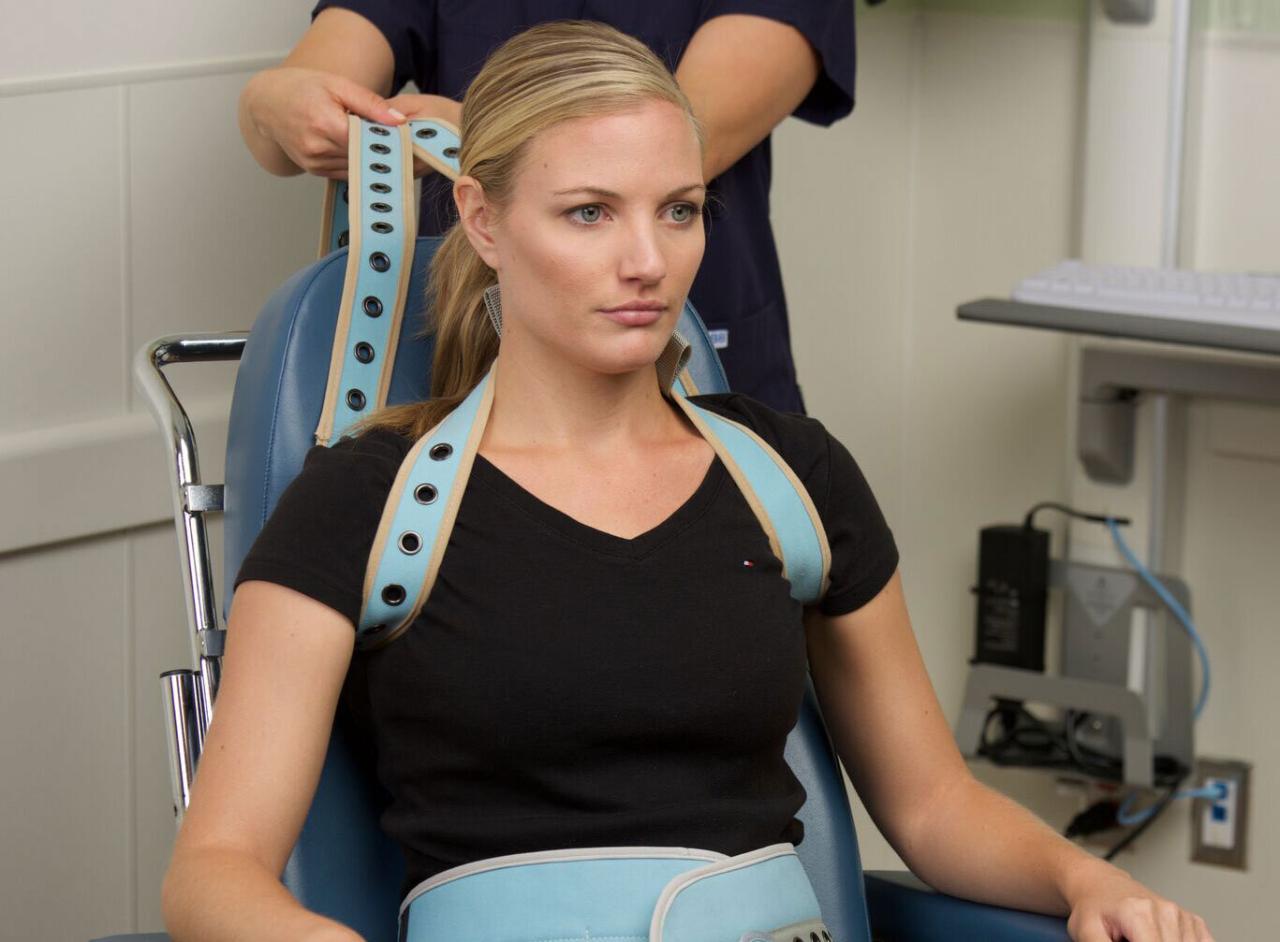
Geri chairs are designed to provide safety and comfort for patients in various clinical settings. They are particularly beneficial for individuals who have difficulty sitting upright or who require additional support due to physical or cognitive impairments.
Is a geri chair a restraint? Well, it depends on the specific chair and how it is used. Some geri chairs are designed to provide support and stability for people with mobility issues, while others may be used to restrict movement.
On the other hand, a hana table well leg holder is a device that is used to hold a person’s legs in place while they are sitting at a table. This can be helpful for people who have difficulty keeping their legs still or who need additional support.
Ultimately, the question of whether or not a geri chair is a restraint is a complex one that requires careful consideration of the individual’s needs and circumstances.
Promoting Safety
Geri chairs offer enhanced safety features that help prevent falls and injuries. The sturdy construction, wide base, and adjustable height ensure stability and reduce the risk of tipping over. Additionally, the armrests and footrests provide support and prevent the patient from sliding out of the chair.
Enhancing Comfort
Geri chairs are designed to maximize comfort for patients. The padded seat and backrest provide pressure relief and support, reducing the risk of discomfort and pressure sores. The adjustable backrest allows patients to recline and find a comfortable position, promoting relaxation and reducing fatigue.
Specific Patient Populations
Geri chairs are particularly beneficial for the following patient populations:
- Elderly patients:As individuals age, they may experience decreased muscle strength, balance, and coordination, making them more susceptible to falls. Geri chairs provide a safe and supportive environment for elderly patients.
- Patients with mobility impairments:Individuals with physical disabilities or injuries may have difficulty sitting upright or moving independently. Geri chairs offer support and stability, allowing them to sit comfortably and safely.
- Patients with cognitive impairments:Individuals with dementia or other cognitive impairments may be at risk for wandering or becoming agitated. Geri chairs with high backs and enclosed sides can help prevent patients from wandering and provide a sense of security.
Alternatives to Geri Chairs
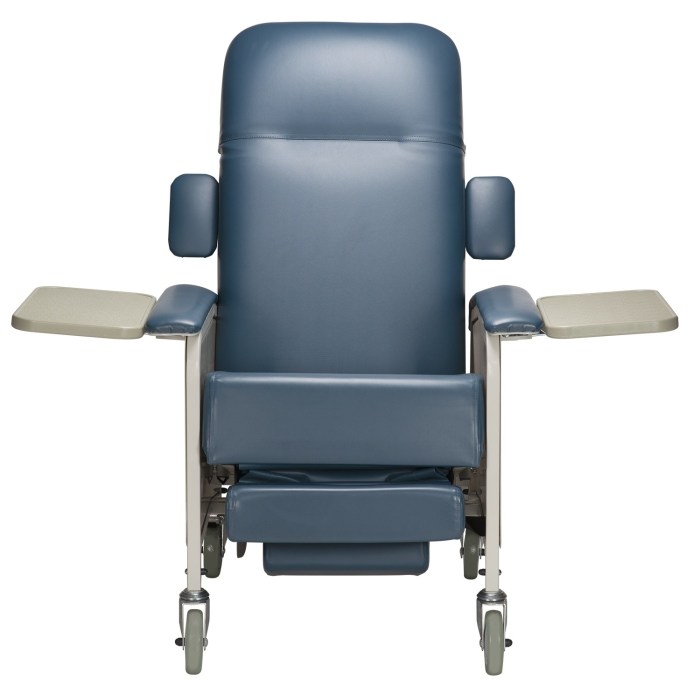
Geri chairs, while providing certain benefits, may not be suitable for all patients. In such cases, alternative methods should be considered to ensure safety and comfort.
Alternatives to geri chairs include:
Physical Interventions
- Bed rails:Assist patients in maintaining a safe position in bed, reducing the risk of falls.
- Hip protectors:Padded garments worn around the hips, designed to absorb impact and minimize injuries from falls.
- Floor mats:Non-slip mats placed on the floor to provide additional traction and prevent slipping.
- Grab bars:Installed in bathrooms and other areas, providing support for patients when getting in and out of showers or using the toilet.
Environmental Modifications, Is a geri chair a restraint
- Removing tripping hazards:Ensuring a clear and unobstructed path, reducing the risk of falls.
- Improving lighting:Adequate lighting helps patients navigate their surroundings safely, reducing the risk of falls and accidents.
- Adjusting furniture height:Modifying furniture height to match the patient’s needs, enhancing comfort and reducing the risk of falls.
Other Interventions
- Patient education:Involving patients in their care and providing education on fall prevention strategies.
- Medication review:Identifying and adjusting medications that may increase the risk of falls.
- Regular exercise:Maintaining physical activity to improve balance and strength, reducing the risk of falls.
Selection Considerations
The most appropriate intervention depends on the individual patient’s needs and preferences. Factors to consider include:
- Patient’s mobility and balance
- Cognitive function
- Risk of falls
- Environmental factors
- Patient’s comfort and preferences
Training and Education
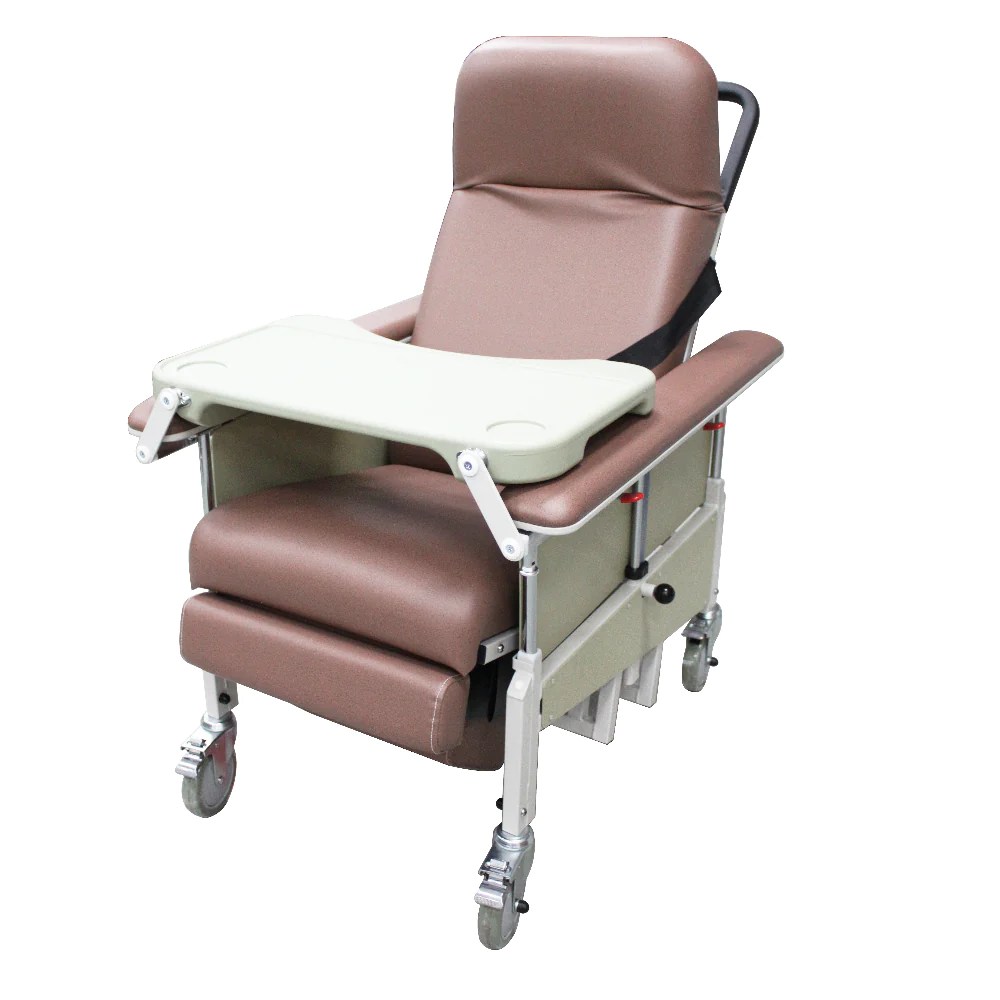
Proper training is crucial for staff who use geri chairs to ensure their safe and ethical use. Effective training programs should cover the following key elements:
- Understanding the purpose and function of geri chairs:Staff should be familiar with the different types of geri chairs, their intended use, and the potential benefits and risks associated with their use.
- Proper use and handling techniques:Staff should be trained on the correct way to position, secure, and transfer residents using geri chairs. This includes understanding the weight capacity and safety features of the chair, as well as proper body mechanics.
- Resident assessment and monitoring:Staff should be able to assess residents’ needs and determine if a geri chair is appropriate. They should also be trained to monitor residents while in the chair and to identify any signs of discomfort or distress.
- Legal and ethical considerations:Staff should be aware of the legal and ethical implications of using geri chairs. This includes understanding the resident’s right to autonomy and informed consent, as well as the importance of preventing falls and other injuries.
Ongoing education is essential to ensure that staff remain up-to-date on the latest best practices for using geri chairs. This can include attending workshops, reading articles, and participating in online training programs.
FAQ Guide
What is the primary purpose of a geri chair?
Geri chairs are designed to provide support, comfort, and safety for elderly or disabled individuals, promoting their mobility and independence.
Can geri chairs be considered restraints?
In some situations, geri chairs may be used in a way that restricts a person’s movement, which could legally qualify as a restraint. However, this depends on the specific circumstances and intended purpose of the chair.
What are the ethical concerns surrounding the use of geri chairs?
Ethical concerns arise when geri chairs are used without informed consent or when they unnecessarily restrict a person’s freedom of movement, potentially impacting their dignity and autonomy.
